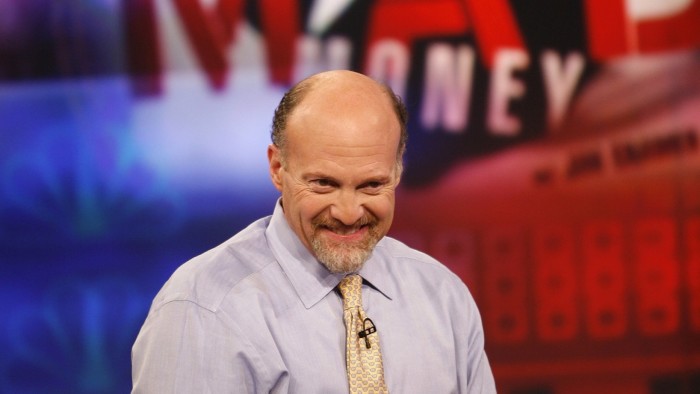Jim Cramer is . . . kicking ass?

Simply sign up to the Fund management myFT Digest -- delivered directly to your inbox.
Shock, horror, etc: Jim Cramer’s stock picks are doing pretty well.
To clarify, the ETF that’s long Cramer’s “Mad Money” recommendations (LJIM) gained 16 per cent over the two months ended July 31. While it has retreated from its late-July peak, it’s still been left with a gain of more than 7 per cent. The much more popular Inverse Cramer ETF (SJIM), which shorts all his picks, is underperforming, and is down 7 per cent since May 31.
Cramer can thank Nvidia for his outperformance. The Nasdaq ETF QQQ is up around 6 per cent since May, with the S&P 500 up 7 per cent. The rising AI tide has lifted a marina full of megacap growth stocks, or, as Cramer subtly calls them, the “Magnificent Seven.” That cohort includes Cramer pick Nvidia, which is up nearly 12 per cent in that time.
Since inception, Long Jim is up 8 per cent (QQQ is up 27 per cent in that time, fwiw), while Short Jim is down 8 per cent.
“It’s interesting. When I launched the long side, I looked at it as a joke,” said Matthew Tuttle, the chief executive of the LJIM/SJIM provider, Tuttle Capital Management. “But now I really like the portfolio.”
When the funds launched, investors preferred the short Jim fund, which peaked at more than $6mn in assets. Now it has dropped to half that, as Cramer bears head for the exits. The passive Cramer faithfuls are small in number. Long Jim holds just over $1mn in assets. The amount is small enough that it is possible (but extremely unconfirmed) that it could be all Jim.
The portfolio operates by buying when Jim says buy, and selling when Jim says sell. If a stock gets “stale” or is presumed to have fallen out of favour with the king of daytime cable investing news, it is clipped from the ETF’s roster. “When you watch him every day for 7 months, you know what his favourite stocks are,” Tuttle said. “I’ve probably taken years off my life by watching.”
Some of this, it must be noted, is down to timing. If the ETF had been created earlier — say, any time before its actual launch in March — the results would be different. In February, Cramer pushed shares in Silicon Valley Bank, which spectacularly combusted a month later. He also urged viewers to exit their positions in crypto at cratered valuations at the end of December. Bitcoin is up nearly 80 per cent since the start of this year.
But, as in markets and so in Cramerland, timing is everything.
“He’s been kicking ass ever since,” Tuttle says.

Comments